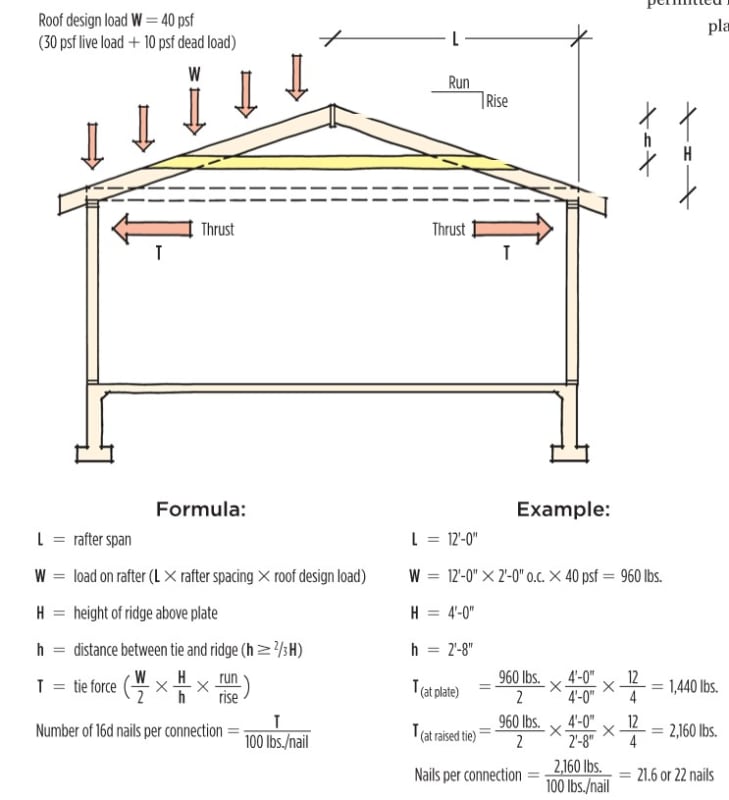I suppose it depends on how it's detailed in reality, but conventionally the ridge connection doesn't transfer moment, only horizontal load (no vertical load due to symmetry), and the same would apply to the tie, you could potentially get some slight moment there as a result of a 2x2 grid of nails for the horizontal load, but it would be so minimal I think releasing the end of the tie for moment is correct because otherwise too much moment will transfer via the analysis.
You could probably generalize that most connections in light-framed wood are non-moment.
As a side note there should also be a collar tie in the top third of the roof, but I don't model those, because there's not much it can do, if it takes compression it should be unbraced weak and strong axis and buckle pretty quickly. You could model the tension tie as tension only, but I didn't since it has to support it's own weight and it takes ceiling load on the bottom of the tie. Or at least it would, typically.
Incidentally, I ran through ENG16080 and Truesdale formulas and they are symbolically the same, both formulas look a little odd given the choice of variables, but they produce the same formula if you start making the variables match up. SL/2 = big H in Truesdale, L in Truesdale is roof span/2 (L) in ENG 16080. What I come up with for tie force in both simplifies to w (in plf) x L (rafter span in feet) ^2 / (2 * height from ridge to tie, in feet). I agree that the little h in Truesdale is kind of a strange dimension to use, from a construction standpoint. I like the full rafter span as L because it'll feed into the IRC more directly. Truesdale puts in that odd run/rise, which is equal to L / H, and then the H in his formula cancels out. That's why I think that formula is oddly written.
The number of nails involved in that connection from Truesdale is highly unrealistic, as a side note, but something like an A35 top and bottom might get you in the neighborhood. We are talking about something that's less than 16 inches square if we have a 4" x 4" overlap between the rafter and the rafter tie.

